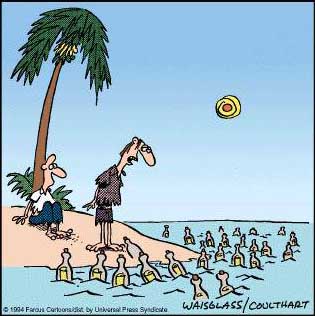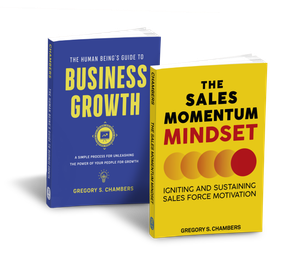3 Things to Know About Mailing Lists
3 Things to Know About Mailing Lists

Last Thursday I had coffee with a local entrepreneur that I consider to be one of the most creative marketing minds I've ever met. He was describing a new idea and the conversation drifted to promoting this idea and the topic of lists. As in "sales leads" or "mailing lists" used for marketing. I gave him a quick overview and promised to send him a copy of a 3 part lesson I did for a marketing department back in 2012.
Since you've found this, you get it too. Lucky duck. Here's the first part of my 3 part series: 3 Things You Absolutely Need to Know About Mailing Lists.
This 3 part series comes from my 25 years spent growing businesses, including 7 years in the list business. I've boiled all these years of experience into 3 things you absolutely need to know about mailing lists.
Why 3? It's a magic number.
Part 1 is Know the Data.
Part 2 (which will be coming) is Go Beyond the Data
Part 3 (which will come after that) is Make Sure They Care, my mystical secret sauce to getting the most from a list
Let's jump into Part 1.
The First thing you absolutely need to know about mailing lists before you invest is Know the Data.
We live in the age of Big Data and it seems like everything that we want to know should be found with the click of a button. The reality is that we aren't there yet, so when you're out looking for prospecting lists, mailing lists or market research lists, it helps to have an idea as to how lists are made. Let's look at the 3 most popular types of lists:
Compiled Lists
Response/Subscriber Lists
Association/Trade Show Lists
(I'll stick with 3 - the magic number)
Compiled Lists:
A compiled list is pretty much what the name infers. The list data is "compiled" from sources that can range from something simple like the Phone Book (remember those?) to compilation from multiple sources - telephone directories, public government data (auto registrations, business registrations, birth announcements), directories (professional associations, trade license associations), and maybe even some private sources (membership lists, house-to-house canvassing).
Compiled lists are important because they allow you to target likely customers through demographic data and you can obtain these lists at a reasonable cost. Think of this as 5,000 foot level data. "Plumbers in Columbus, OH" or "Households with Children under 12 Years Old in ZIP code 90210". Great for finding new business.
Response/Subscriber Lists:
A response list is made up of individuals or businesses that have "responded" or attempted to contact the list owner. In a perfect world, these lists are filled with people more likely to respond to your offer. The subscriber portion refers to lists that are made up of "subscribers" to a list or service or company.
Response/Subscriber lists are important because they allow you to target likely customers that have "raised their hand" but it comes at a cost. Think of this as 1000 foot level data. Instead of getting all Plumbers in Columbus, OH you get only those plumbers in that area that have responded or subscribed to that list. Same with the Households. The list size is decreased dramatically, but the cost goes up because they might be more likely to buy.
Association/Trade Show Lists:
These lists come from your favorite Associations or Trade Shows. Association members generally pay a fee to belong to the Association and will have warm feelings toward others who are in that same Association. Trade Show lists are from attendees that have opted in to receive solicitations or have stopped by your booth.
These lists can be very powerful. . .or they can be like your local Chamber List where everyone belongs and you don't get that "exclusivity" that leads to boost in response. Think of these as Neighborhood level lists because if you can think of the business, they're probably on the list.
When you get out and dig for lists, Knowing the Data can help you decide where you will get the biggest bang for your marketing dollar. Want a quick example?
I have 4 sales reps and we're expanding into a new territory. We have a new software offering that we helps small retailers, so I want to jump start my marketing by a combination of referrals, calls and online activity.
In this case, being able to pull a list of all retail NAIC codes (52-59) with an Owner listed as a contact will give me a decent sized list that I can start with. That's a compiled list. Which is good because it won't break the bank.
I'll use this list by running it past current customers asking them for referrals, start calling them and get one of my reps to use the list as a starting point for that online research activity he does best. Like taking those company names, looking them up on LinkedIn, seeing who they have in common and working for an introduction or joining the online groups these found targets are part of. Instead of a blind dial, we're narrowing our focus.
Voila! Jump start accomplished.
Knowing the Data is the best way to help you navigate the weird world of Mailing Lists. You can take these descriptions and pepper the list providers with questions as well as have a way to gauge the cost/response/effectiveness of your marketing campaign.
Look for Part 2 of what you Absolutely Need to Know to arrive when I find where I stored it. I may have put together a short, star-studded, power packed video to explain the other 2 parts so I'll need to get the transcription. It's a process.
Good stuff.
About the Author: Greg Chambers is Chambers Pivot Industries. Get more business development ideas from Greg on Twitter.





